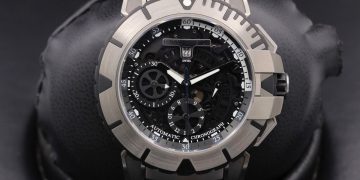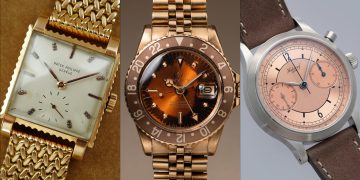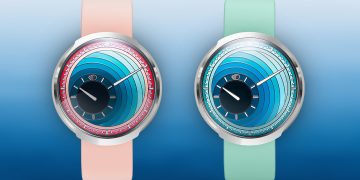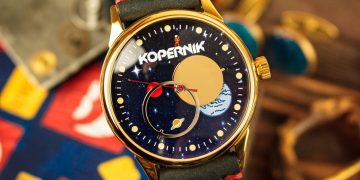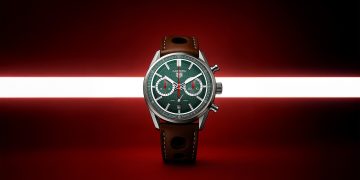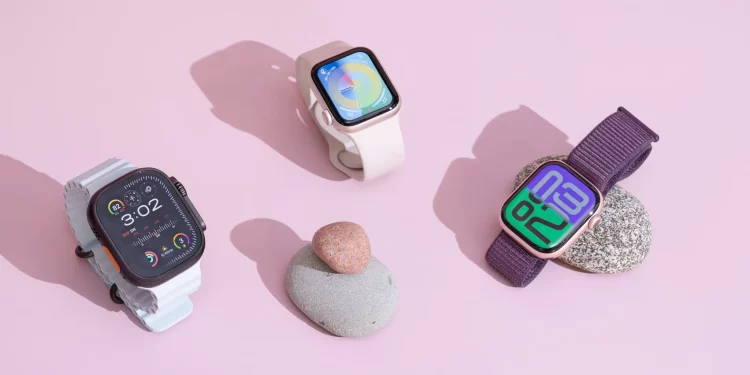Introduction: A New Era of Wearables – The Birth of the Apple Watch
When the Apple Watch was first introduced in 2015, it marked a pivotal moment in the world of wearable technology. Apple, a company already renowned for its groundbreaking products such as the iPhone, iPad, and MacBook, ventured into the burgeoning world of smartwatches with a device that was aimed not only at revolutionizing how people interact with technology, but also transforming how we view personal health, fitness, communication, and fashion.
However, while the Apple Watch may seem like an inevitable product from a company that dominates the tech world, its creation and rise to success involved strategic vision, design excellence, and a commitment to creating a product that would redefine personal technology. This article will take you on a journey through the history of the Apple Watch, from its initial launch to its current status as a pioneering device in wearable tech.
In this article, we will explore:
- The origin story of the Apple Watch and its place in Apple’s ecosystem
- Key milestones and evolutionary updates to the device
- The cultural, social, and technological impact of the Apple Watch
- How the Apple Watch has become an icon in the wearables industry
Let’s dive into the rich history of this game-changing device and uncover how Apple Watch continues to influence not only the tech industry, but also the ways in which we live our lives.
1. The Concept of Wearable Tech Before Apple Watch
a. Early Wearable Technology: A Precursor to the Apple Watch
Before Apple entered the wearable tech space, the concept of wearable devices had already begun to emerge in the form of products like fitness trackers, smartwatches, and health monitoring devices. However, most of these products were either clunky, unattractive, or niche, appealing primarily to athletes, fitness enthusiasts, or those in specialized professions.
- Fitness Trackers: Early devices like the Fitbit (launched in 2009) or Jawbone were focused mainly on tracking activity levels, sleep patterns, and calorie burn, but they lacked the robust functionality of modern smartwatches.
- The Birth of Smartwatches: The idea of a “smartwatch” emerged from the combination of traditional timepieces and early smartphone technology. Companies like Samsung and Pebble experimented with early smartwatch concepts, offering basic features like notifications, weather updates, and the ability to pair with smartphones for enhanced communication.
Despite these initial efforts, wearable technology was still a niche market. Consumers were not yet fully convinced that wearables could offer both the functionality and style that Apple was known for delivering.
b. Apple’s Entry into Wearable Tech: The Catalyst
Apple’s entrance into the world of wearable technology was a response to both an evolving market and the company’s deep understanding of its own ecosystem. By the time the Apple Watch was officially announced, Apple had already built a strong reputation for creating user-friendly, beautifully designed devices, which made its move into wearables highly anticipated.
- Steve Jobs and the Vision of Wearables: While Steve Jobs did not live to see the Apple Watch come to fruition, his vision for creating devices that integrated seamlessly into people’s lives laid the groundwork for Apple’s success in wearable tech. Jobs often emphasized the importance of design and the user experience, both of which became cornerstones of the Apple Watch.
- Apple’s Focus on Health and Fitness: Apple’s growing focus on health and fitness also influenced the development of the Apple Watch. The introduction of the Health app on the iPhone and Apple’s focus on providing consumers with tools to monitor their personal health signaled the company’s desire to revolutionize the wellness space.
In this section, we will discuss the cultural climate in wearable tech before Apple’s entry, and how Apple took the opportunity to redefine what a smartwatch could be.
2. The Birth of the Apple Watch: From Concept to Reality
a. The Development of the Apple Watch
Apple’s journey into wearables was a long time coming. The Apple Watch didn’t emerge from a vacuum—it was the result of years of research, development, and a keen understanding of the potential of smartwatches.
- Team Formation: Apple’s first steps into the wearable space were led by Jony Ive, Apple’s Chief Design Officer, and a team of engineers who worked in secrecy for several years. Their goal was to create a smartwatch that could not only compete with existing products but also elevate the entire category.
- Key Design Considerations: Apple Watch’s design philosophy was a mixture of elegance and practicality. Apple wanted to create a product that was sleek, fashionable, and functional. Early prototypes showed an ambitious blend of traditional watch aesthetics and modern, high-tech functionality. One of the challenges was balancing aesthetics with the limitations of a small screen and ensuring the device’s battery life could last throughout the day.
b. The Official Launch of the Apple Watch in 2015
In September 2014, Apple announced the Apple Watch at its keynote event. It was the company’s first major new product in five years since the iPad. The device was initially positioned as an extension of the iPhone, enabling users to check notifications, make payments through Apple Pay, track fitness, and perform other tasks directly from their wrist.
- Three Models: At launch, the Apple Watch came in three different versions:
- Apple Watch Sport: Targeted at fitness enthusiasts, made with lightweight aluminum and featuring a rubberized sport band.
- Apple Watch: The standard model made from stainless steel with a more premium finish and various band options.
- Apple Watch Edition: A luxury model featuring an 18-karat gold case.
- Apple Watch’s Impact on Fashion: Apple’s partnership with Hermès for the luxury Apple Watch band, along with the variety of interchangeable bands, helped establish the Apple Watch as not just a piece of tech, but also a fashion accessory.
The official release in April 2015 generated significant buzz, despite some early criticisms about the device’s high price point, limited app support, and relatively basic features compared to the already existing smartwatch competition.
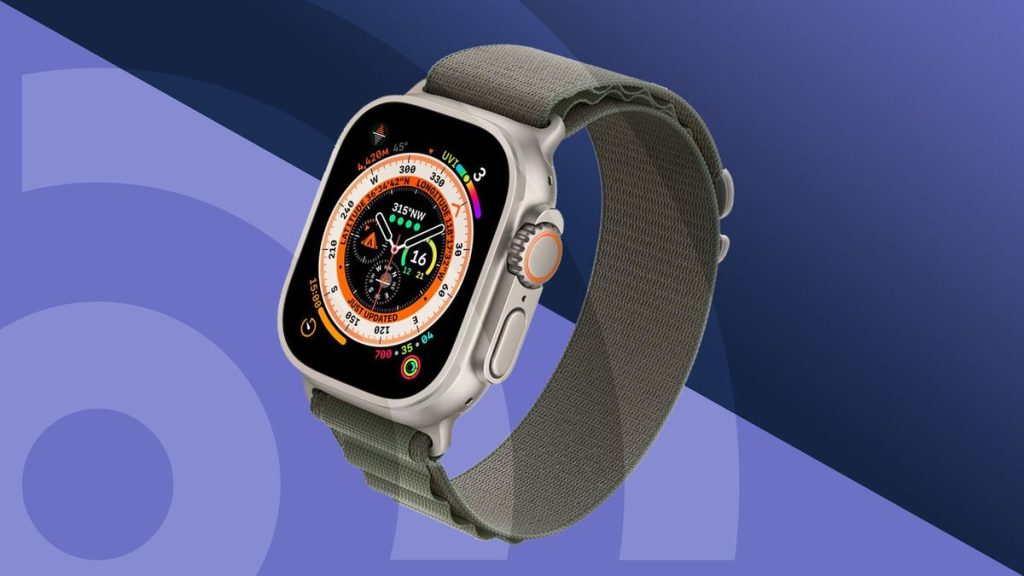
3. Apple Watch Evolution: Key Milestones and Updates
a. WatchOS and Software Updates
One of the key elements that set the Apple Watch apart from its competitors was its software. Apple Watch ran on a unique operating system called watchOS, which was designed specifically to cater to the unique needs of a wearable device.
- watchOS 1 (2015): The first version of watchOS launched with the original Apple Watch. It was limited in functionality but allowed users to interact with apps, notifications, and fitness data on their wrist.
- watchOS 2 (2015): A key update, bringing the ability to run native apps directly on the watch, improving speed and responsiveness. This version also introduced third-party complications on watch faces.
- watchOS 3 (2016): A major overhaul of the software that introduced performance improvements, faster app launching, and the Dock feature, which allowed quick access to recently used apps.
b. New Models and Features: Apple Watch Series 1, 2, 3, 4, and 5
Each year, Apple has introduced updated versions of the Apple Watch with new features and performance improvements. Let’s examine the major changes that occurred with each series:
- Apple Watch Series 1 and 2 (2016):
- Series 2 introduced built-in GPS and water resistance, making it a better option for fitness enthusiasts and swimmers.
- Apple Watch Series 3 (2017):
- The addition of cellular connectivity allowed users to make calls, send messages, and use data without needing their phone nearby.
- Apple Watch Series 4 (2018):
- This series saw significant design changes, including a larger display and rounded corners. It also introduced advanced health features like ECG (electrocardiogram) monitoring, making it one of the most advanced health tracking devices on the market.
- Apple Watch Series 5 (2019):
- The introduction of the Always-On Display made it easier to see the time and notifications without raising your wrist. This update also introduced compasses and additional health monitoring tools.
c. The Apple Watch Ultra (2022)
In 2022, Apple released the Apple Watch Ultra, a more rugged version aimed at athletes and adventurers. This model is larger, more durable, and comes with specialized features such as enhanced GPS, deeper water resistance, and a longer battery life, making it ideal for extreme sports, hiking, and underwater exploration.
4. Apple Watch’s Cultural and Technological Impact
a. Fitness and Health
Apple Watch has become a powerful tool for health and fitness tracking. With the introduction of features like heart rate monitoring, ECG, sleep tracking, and blood oxygen level tracking, the Apple Watch has revolutionized the way people monitor and manage their health.
b. Fashion and Lifestyle
Apple Watch’s seamless integration of technology with fashion has also had a lasting impact. The device’s wide range of customizable bands, collaborations with luxury brands like Hermès, and its sleek design have made it a staple in the fashion world.
c. Personal Convenience and Communication
The Apple Watch’s ability to sync with the iPhone has made it a central hub for communication, notifications, and personal convenience. With Apple Watch, users can check their messages, respond to texts, receive notifications, make payments through Apple Pay, and even make calls without reaching for their iPhone.
5. The Future of the Apple Watch: What’s Next?
As Apple continues to innovate, the future of the Apple Watch looks promising. Potential future developments could include:
- Advanced Health Monitoring: We can expect more breakthroughs in healthcare features, including deeper integration with medical services.
- Improved Battery Life: Future models may feature longer battery life, making it easier for users to rely on their watches for extended periods.
- New Designs and Functions: As technology advances, Apple could introduce even more innovative features and designs, keeping the Apple Watch at the forefront of the wearables market.
Conclusion: Apple Watch’s Lasting Legacy
The Apple Watch has not only redefined what a smartwatch can be, but it has also changed the way people think about technology, fashion, and personal health. What began as a new chapter in Apple’s ecosystem has evolved into an iconic product that is central to the wearables revolution. As technology continues to progress, the Apple Watch will undoubtedly remain a pivotal part of Apple’s vision for the future, continuing to influence both the wearable market and the broader tech landscape.



